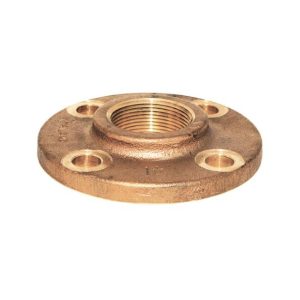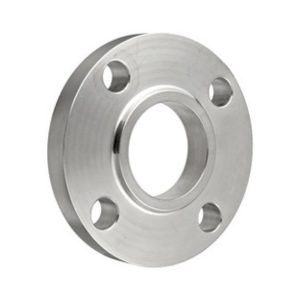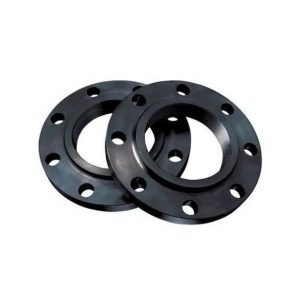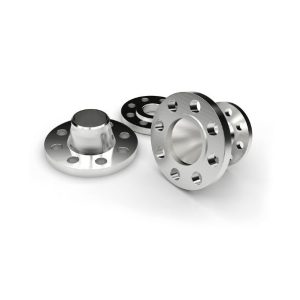Superior Strength, Exceptional Performance
Bimetallic Flanges
At MBTC, we take pride in offering a diverse range of high-quality flange solutions, including our innovative bimetallic flanges. Engineered to deliver superior strength and exceptional performance, bimetallic flanges are designed for applications that demand reliability and durability in challenging environments.

Technical Specifications of Bi-Metallic Flanges
Bi-metallic flanges are available in a wide range of sizes, pressure ratings, and face types, catering to diverse application requirements. Here are the key technical specifications to consider:
Available Sizes:
1/4″, 1/2″, 1″, 1-1/4″, 1-1/2″, 2″, 2-1/2″, 3/8″, 3/4″, 3″, 4″, 5″, 6″
Available Pressure Ratings:
Class 150 (CL150), Class 300 , CL300), PN10, PN16, PN25
Available Face Types:
Flat Face (FF), Raised Face (RF)
Material Composition:
Carbon Steel A105 Flange With Brass Connection

Uniting Strength and Corrosion Resistance
Bimetallic flanges represent a fusion of two distinct materials, typically steel and a corrosion-resistant alloy like stainless steel or titanium. This amalgamation creates a single, cohesive unit that marries the robustness of steel with the corrosion resistance of the alloy. In essence, bimetallic flanges offer the optimal balance between strength and durability, making them an ideal choice for various industrial applications.
Versatile Applications in Piping Systems
These innovative flanges find extensive use in water, gas, and sanitary applications, particularly for connecting copper tubes or brass pipes. Their primary function is to mitigate accelerated corrosion and deterioration within the piping system, stemming from galvanic and stray currents. By acting as a barrier against these corrosive forces, bimetallic flanges prolong the lifespan of the piping infrastructure, ensuring long-term reliability and efficiency.
Uniting Strength and Corrosion Resistance
Versatile Applications in Piping Systems
Bimetallic flanges represent a fusion of two distinct materials, typically steel and a corrosion-resistant alloy like stainless steel or titanium. This amalgamation creates a single, cohesive unit that marries the robustness of steel with the corrosion resistance of the alloy. In essence, bimetallic flanges offer the optimal balance between strength and durability, making them an ideal choice for various industrial applications.
These innovative flanges find extensive use in water, gas, and sanitary applications, particularly for connecting copper tubes or brass pipes. Their primary function is to mitigate accelerated corrosion and deterioration within the piping system, stemming from galvanic and stray currents. By acting as a barrier against these corrosive forces, bimetallic flanges prolong the lifespan of the piping infrastructure, ensuring long-term reliability and efficiency.
Benefits of Bi-Metallic Flanges:
Corrosion Resistance: The fusion of carbon steel with stainless steel or alloy steel provides unparalleled corrosion resistance, safeguarding against rust, erosion, and degradation. This ensures leak-free connections and extends the service life of the flange, even in corrosive environments.
Strength and Durability: Bi-metallic flanges boast superior strength and durability, capable of withstanding high-pressure and high-temperature conditions prevalent in various industries. Their robust construction ensures reliable performance, minimizing downtime and maintenance costs.
Cost-Effectiveness: Investing in bi-metallic flanges offers a cost-effective solution without compromising on quality or performance. These flanges provide the benefits of corrosion-resistant alloys at a fraction of the cost, making them an economical choice for budget-conscious projects.
Versatility: Bi-metallic flanges can be customized to meet specific application requirements, allowing for flexibility in design and construction. Suppliers offer a wide range of configurations, sizes, and pressure ratings to accommodate diverse industry needs.
Wide Temperature Range: Bi-metallic flanges exhibit exceptional thermal stability, enabling them to withstand extreme temperature variations encountered in various operating conditions. This versatility ensures optimal performance across a broad spectrum of applications.
Conclusion:
In conclusion, bi-metallic flanges represent a pinnacle of engineering excellence, offering a fusion of strength, durability, and corrosion resistance essential for critical piping systems. By leveraging their technical specifications and benefits, industries can enhance the efficiency and reliability of their operations, ensuring seamless performance even in the most demanding environments.
Get In touch
Steel fabrications







